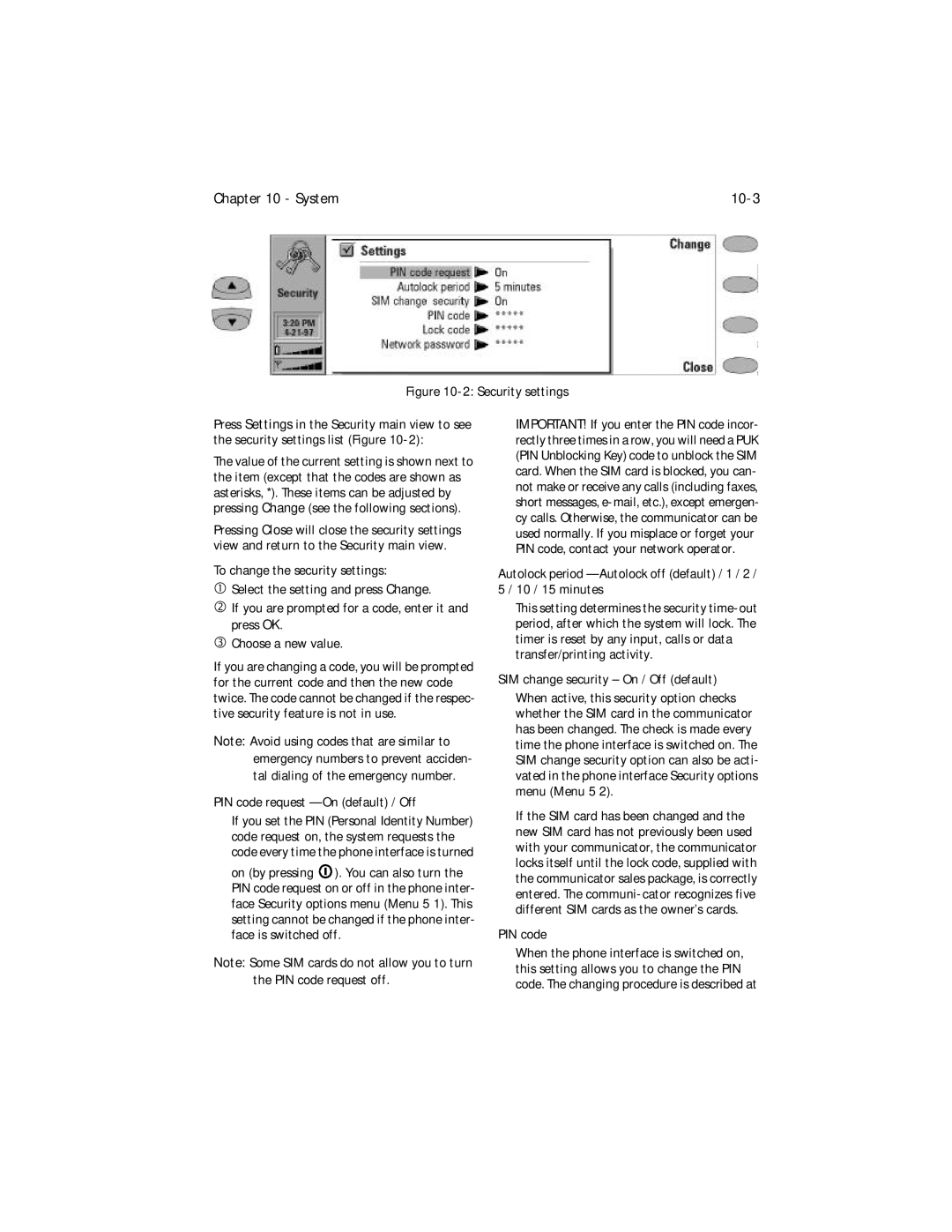9000i specifications
The Nokia 9000i Communicator, released in 1997, represents a significant milestone in the evolution of mobile communication devices. An advancement over its predecessor, the Nokia 9000, the 9000i integrates features reminiscent of personal digital assistants (PDAs) and mobile phones, catering to both business professionals and tech enthusiasts.One of the standout features of the Nokia 9000i is its unique clamshell design, which opens to reveal a full QWERTY keyboard, transforming the device into a mini-laptop. This ergonomic layout enhanced typing ease, making it ideal for drafting emails and documents on the go. The device incorporates a 4.5-inch monochrome LCD display, which, while basic by today's standards, provided clarity and functionality for the time.
The Nokia 9000i is equipped with various functionalities tailored for business use. Its integrated email client allows users to send and receive emails directly from the device, an innovative feature that revolutionized mobile communication in the late 90s. Additionally, it supports fax capabilities, making it easier for users to send documents from virtually anywhere.
In terms of connectivity, the Nokia 9000i features a GSM (Global System for Mobile Communications) module, allowing it to operate on various networks across Europe and other regions. This was a crucial development as it supported voice calls and data transmission in a time when mobile technology was rapidly evolving.
The device is powered by the GEOS operating system, which provides a user-friendly interface and the ability to run various applications. The Nokia 9000i also comes with built-in applications for calendar management, address book, and note-taking, thus offering a comprehensive solution for everyday business tasks.
Battery life is another noteworthy characteristic, with the Nokia 9000i boasting an impressive standby time, enabling users to stay connected without frequently recharging. It also featured a 4MB storage capacity, a remarkable amount back then, allowing users to store contacts, messages, and essential documents.
In conclusion, the Nokia 9000i Communicator remains a nostalgic icon in the history of mobile devices. With its blend of communication and computing features, it laid the groundwork for the smartphones we use today, showcasing Nokia’s commitment to innovation and user-centric design. The device's combination of functionality and mobility offered a glimpse into the future of mobile communication.

